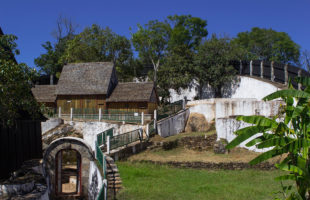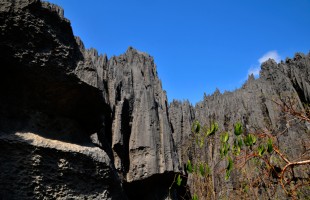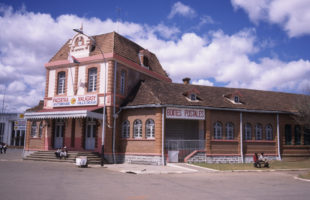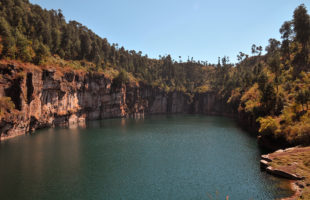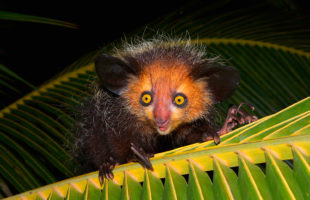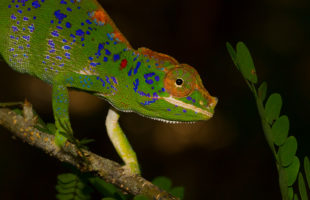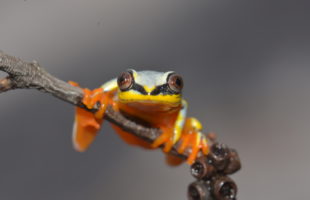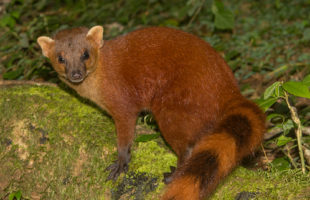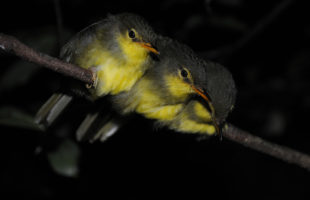About 25 kilometres northeast of Antananarivo in the central highlands of Madagascar lays the royal hill of Ambohimanga. The road there is relatively good, but due to the very chaotic and dense traffic in Tana, a drive to Ambohimanga alone can easily take one to three hours depending on chosen day time. If you want to visit Ambohimanga, it is …
LesenMasika sipa
Andasibe-Mantadia National Park
Andasibe: Formerly, this national park and the village Andasibe had the french name Périnet, which derived from French Henri Périnet, who built the train station nearby at the beginning of the 20th century. Today it is a complex of national parks wearing the Malagasy name Andasibe-Mantadia. The Malagasy name Andasibe means as much as “big camp”, which points to the …
LesenTsingy de Bemaraha National Park
Tsingy de Bemaraha: Mitsingytsingyna is the Malagasy term for “walking on tiptoe” and gives its name to the needle-pointed rocks that make up the National Park. Location: Tsingy de Bemaraha National Park is located in western Madagascar in the Melaky region. It is about 250 km north of Morondava, from where taxis run to the National Park. However, an off-road …
LesenAntsirabe
Antsirabe (“where there is a lot of salt”), is located about 170 km south of the capital Tana in the highlands in the province Antananarivo. It is easy to reach via the RN7. Antsirabe is one of Madagascar’s largest cities with over 200,000 inhabitants and a lot of sights. Economically Antsirabe is one of the most important cities in the …
LesenLake Tritriva
Lake Tritriva is an emerald green lake, located about 15 km from Antsirabe in Madagascar’s central highlands. The next town is Belazao, which is easy to reach via RN34 by 4×4. The lake is of volcanic origin, approximately 160 m deep and part of the eponymic mountain Vakinankaratra region. People of lake Tritriva tell the legend of Rabeniomby and Ravolahanta, …
LesenLemurs, the spirits of the forest
Lemurs are probably Madagascar’s most famous mammals – not for nothing because they originally exist only there and nowhere else in the world. They belong to the strepsirrhine primates and are divided into about 100 different species. The word lemures comes from Latin and refers to the spirits of the dead of ancient Rome, who have little resemblance to the …
LesenReptiles in general
Madagascar is the reptile paradise per se and especially known for its chameleons. 92 of all 213 up to date described chameleon species only occur in Madagascar. They seem to be fabulous creatures with their strange tongue, the independently from eacht other movable eyes and feet and hands transformed into grapsing forceps. Unfortunately, those beautiful animals aren’t very popular with …
LesenAmphibians in general
Especially the rainforests of Madagascar offer an abundance of different frogs for observation and discovery. Almost 4% of the world’s amphibian fauna is found on the island. Especially in the rainy areas on the east coast, you can find countless different species in a small area. In the rainy season, the croaking, chirping, and chirping of the courtship males can …
LesenOther mammals in general
Originally, Madagascar has no big mammals like buffaloes, zebras, hippos, lions or other large animals you can meet all around Africa. Ruminants, which settle nearly all regions worldwide, lack in Madagascar completely. The now everywhere kept Zebus were introduced to the island as domestic cattle and don’t occur in the wild. The Indian Civet is another animal introduced by humans, …
LesenKings of the sky: Madagascar’s birds
Almost 300 different bird species inhabit Madagascar, half of them are endemic. The country’s flagship species, the Madagascar fish eagle or Ankoay (Haliaeetus vociferoides), is a bird of prey. It’s the biggest one in Madagascar and critically endangered, not even more than 100 pairs are known to breed on the island. Other birds of prey are the Madagascar serpent eagle …
Lesen MADAMAGAZINE Your Magazine about Madagascar
MADAMAGAZINE Your Magazine about Madagascar
